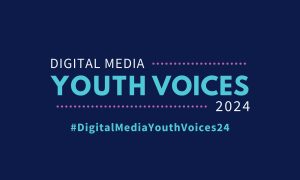Trisha Prabhu is a 22-year-old innovator, social entrepreneur, global advocate and inventor of ReThink™, a patented technology which detects and stops online hate at the source, before bullying occurs and the damage is done. Her globally acclaimed research has found that with ReThink, adolescents change their mind 93% of the time and decide not to post an offensive message.
To date, she has shared the ReThink message in over 100+ keynotes around the world in 3 languages, speaking on platforms that include TED, TEDx, The Aspen Ideas Festival, La Ciudad de Las Ideas, SAP, Girls Who Code, the Family Online Safety Institute, Universities, Schools, Conferences and more.
Great question/I love digital resolutions (I do one every year)! My digital resolution for 2024 is to put my phone away at least 15 minutes before bed! The science suggests that this makes for a better night of sleep; I’ve also found that it reduces mental chatter and helps me unwind/relax.
This is a tough one…but I’d probably say I’d improve the extent to which youth and other historically underrepresented voices are involved in efforts to shape and create guardrails around digital media. By putting more young people at the table, we can ensure that their lived experiences and creative, powerful ideas are at the forefront of the movement for more safe, responsible digital media.
The most important issue facing youth today with respect to technology and digital media is their lack of agency — in being able to shape the digital landscape, in seeing the content they want to see (wouldn’t it be nice if we could decide what was in our feeds?), and in feeling like the internet is something that they take part in, rather than something that is happening to them.
I feel most hopeful about the way that today’s youth are leveraging digital media to ignite revolutions and shed light on pressing social issues, whether climate change or racial justice. It shows the creativity and intentionality with which youth can use the internet today!
I worry about the types of content youth see/consume online, whether harassing, hateful content (which afflicts so many youth, in the US and globally) or otherwise negative content, e.g., content that encourages eating disorders, content that encourages self-harm. So many young people struggle to filter through such content — and no young person should have to! Young people deserve an internet that is safe, affirming, and welcoming by design.
Be skeptical and intentional. Digital media offers incredible content, experiences, and opportunities for connection — but as you’re consuming that information and interacting with others, be critical and thoughtful. A brief pause to think and rethink can go a long way online.
Absolutely — I think for today’s generation, digital media is a core, crucial extension of our lives. In response to today’s digital challenges, so many folks from older generations simply say, “Well, just put down your phone.” The truth is that is not a sustainable, long-term solution to the digital media challenges of today. Digital media is here to stay, and for so many youth, it’s an artistic venue, a place for self-expression, and key to how they make and maintain relationships. Rather than get rid of digital media, we need to ask: what will it take to make it safe?
This is a great question. My biggest piece of advice to parents and caregivers is to have proactive conversations with your children about their digital media habits. So many young people tell me, “I only ever talk to my parents about my phone when I’m in trouble.” The result of this approach is that children may feel less comfortable speaking with parents and caregivers about their digital experiences or any digital challenges they’re facing. When parents and caregivers intentionally and consistently make space for such conversations, however, they convey to youth that they are there for them with respect to their tech experiences — and that’s a powerful message!
About the 2024 Digital Media Youth Voices Campaign
 #DigitalMediaYouthVoices24 provides a glimpse into the hopes and concerns of youth leaders in the digital space. Using their own words, the campaign aims to elevate and amplify the voices of youth themselves as they work to create a healthy digital future.
#DigitalMediaYouthVoices24 provides a glimpse into the hopes and concerns of youth leaders in the digital space. Using their own words, the campaign aims to elevate and amplify the voices of youth themselves as they work to create a healthy digital future.
